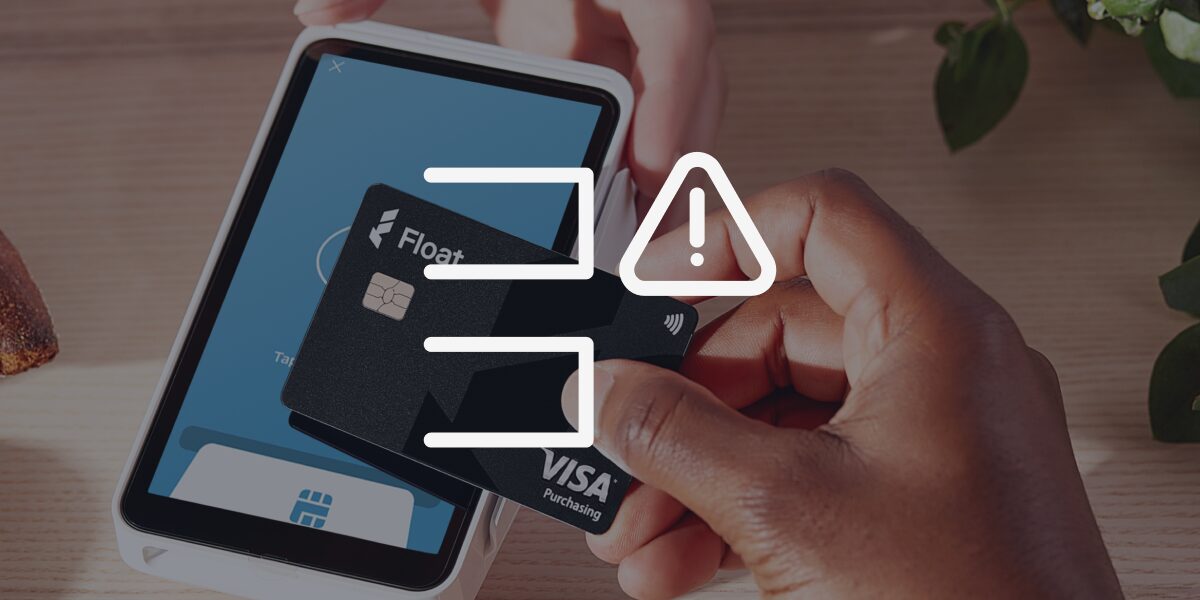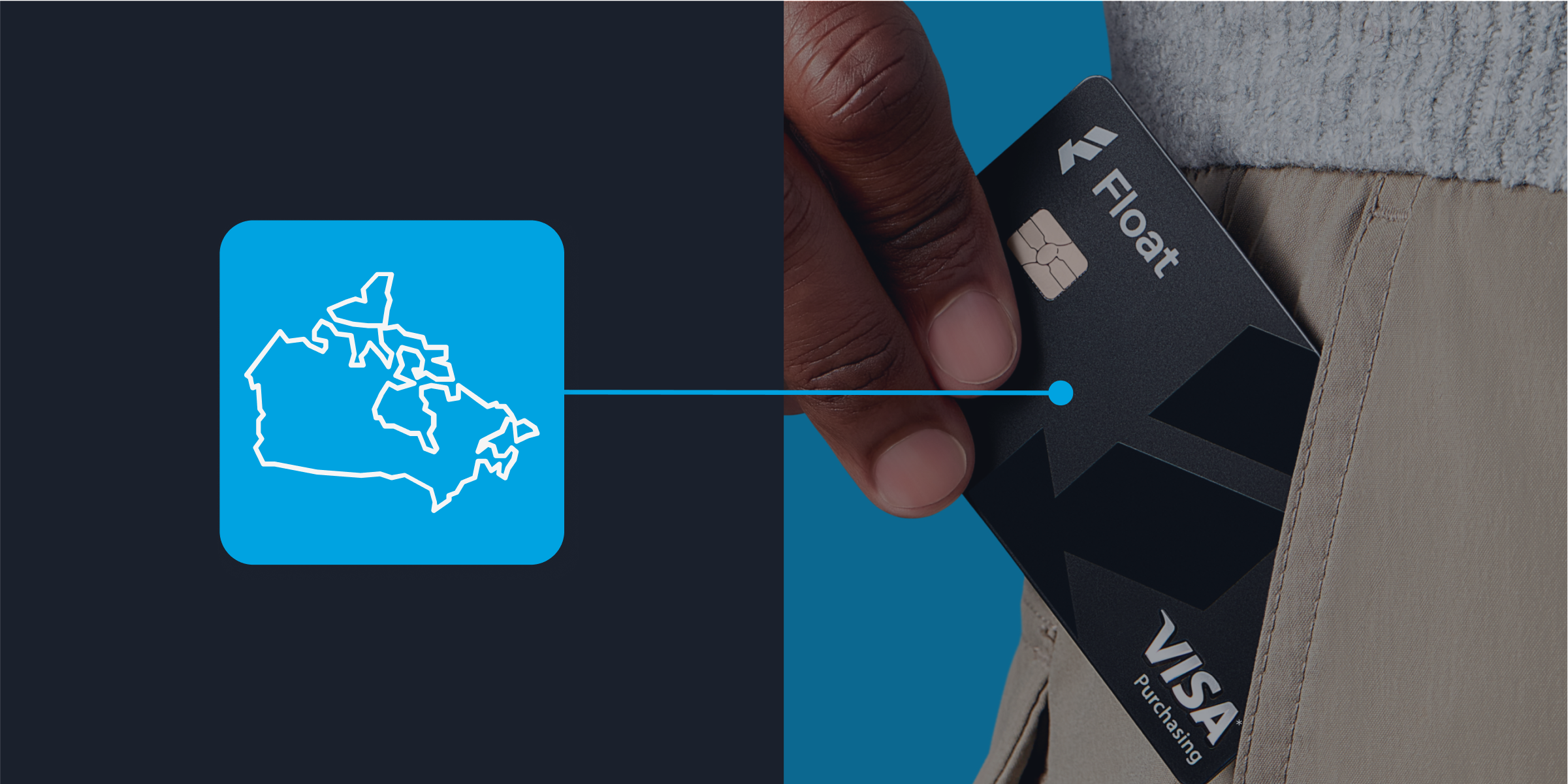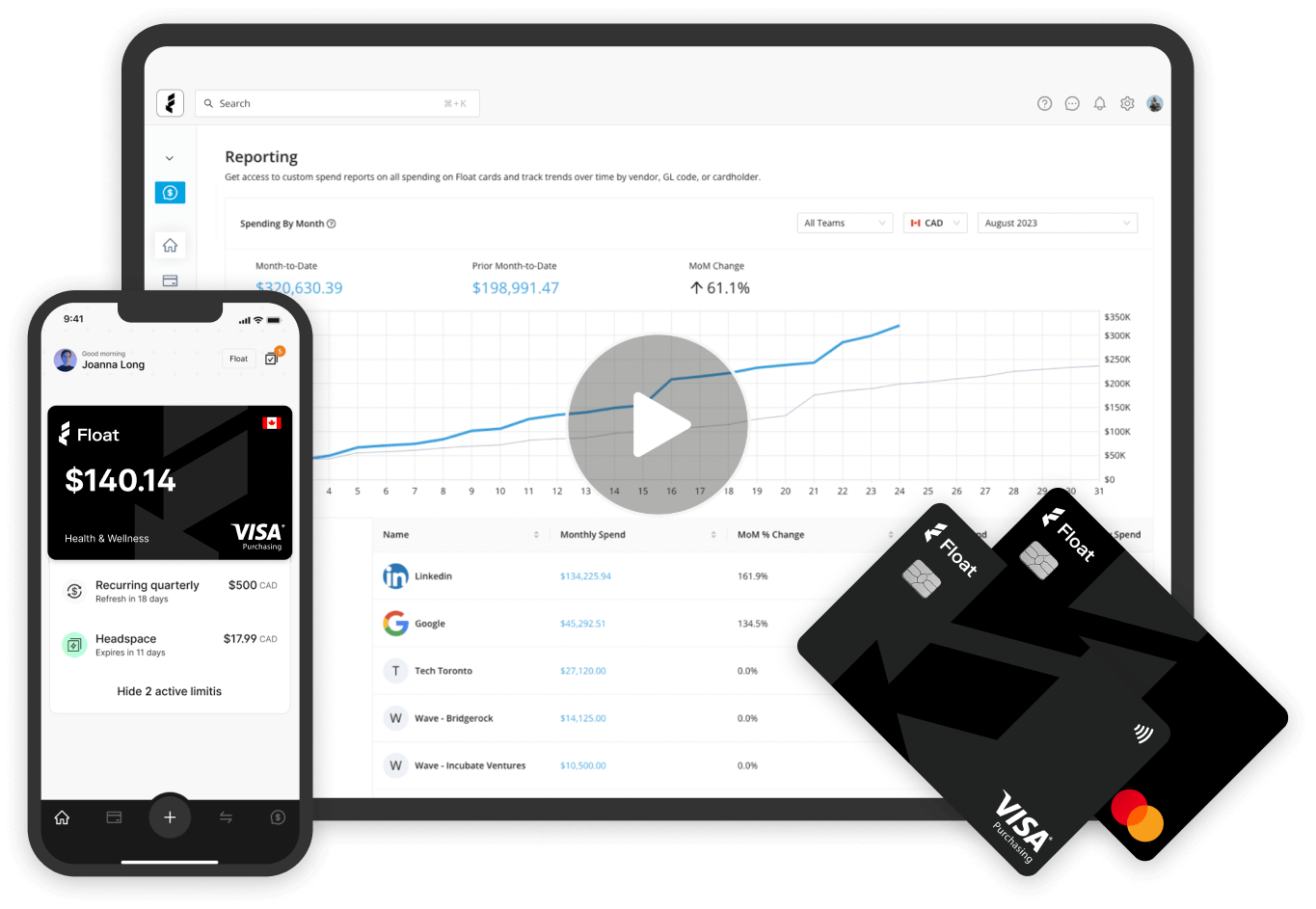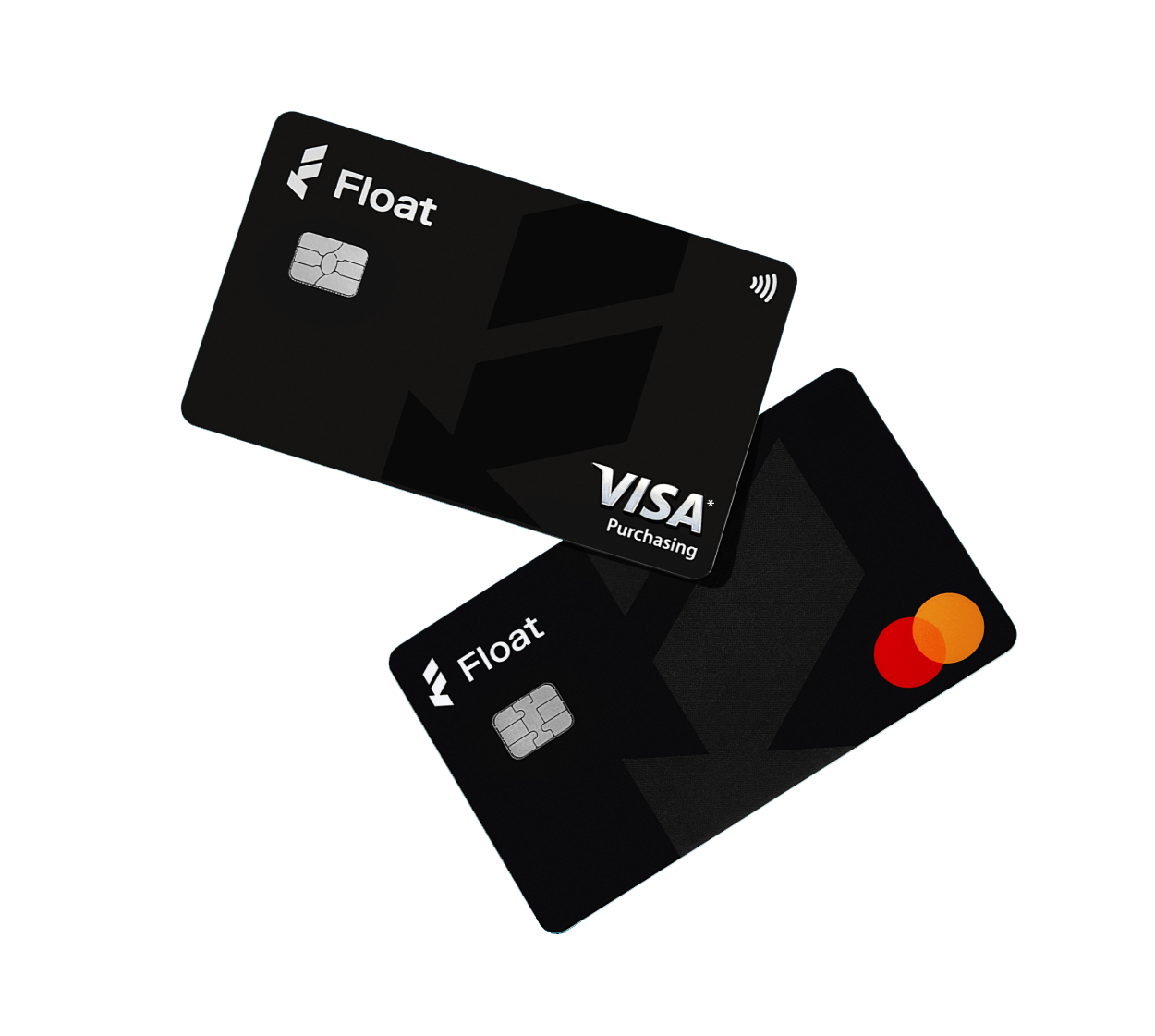Corporate Cards
Temporary Card Spending Limits: Setup & Management Guide
Temporary card spending limits might just be the key you need to empowering your team. Read on to learn more about how to keep spending moving without breaking the budget.
August 25, 2025

Temporary card spending limits are one of the best-kept secrets in smarter spend management. They give finance teams the freedom to empower employees to act, without handing over the keys to the vault.
These temporary card spending limits are also crucial, given the challenges of managing company credit. For perspective, did you know that over half of businesses under five years old struggle with low credit limits on business credit cards? Leveraging tools to stay on top of business credit—and using that credit wisely—can help.
Whether you’re dealing with short-term projects, seasonal campaigns or that one-off vendor who still insists on charging a card, temporary card spending limits allow you to strike the balance between flexibility and control.
In this guide, we’ll explain what temporary card spending limits are, how they work and how to use them effectively to keep spend moving without breaking your budget or your brain.
What are temporary card spending limits?
Temporary card spending limits give you targeted control. The idea goes beyond just limiting how much someone can spend and trusting them to stay within that range. Instead, you’re choosing exactly when that limit applies and for how long.
A temporary card spending limit is exactly what it sounds like: a card cap that’s only valid for a specific period of time. It overrides the standard ongoing limit for the duration you choose, then reverts back automatically.
You might set a lower limit on an employee’s card to keep them within budget for a one-off event, or temporarily raise a card’s limit to cover a larger purchase during a busy season. Either way, you’re giving them just enough access to accomplish what they need to without granting them a blank cheque.
These limits are especially helpful for corporate credit cards and virtual cards. Whether you’re managing monthly allocations or daily debit card limits, the idea is the same: set a control window and let the card handle the rest.
How do temporary spending limits work?
No manual resets. No awkward “whoops” purchases. No uncomfortable conversations at month-end when your finance team has to explain that the budget was blown through… again. Temporary limits keep you in control while giving employees what they need, when they need it.
Temporary spending limits let you set a short-term cap on how much can be spent on a credit card—either for yourself or someone else, like an employee. Once the limit is hit, new charges will be declined until it’s reset or lifted.
Depending on your corporate card provider, setting up a temporary spending limit is easy. Log in to your admin portal and assign the short-term cap. You can do this based on each card, letting you be in complete control of who is spending what and when.
How temporary spending limits work at Float
At Float, admins can create and manage temporary card spending limits right in the platform.
Here’s how it works:
- Admins assign a start and end date, along with the temporary limit amount
- The limit can be set on a new or existing card (say, a $0 card that becomes temporarily active)
- Once the period ends, the card resets to its original limit or gets deleted entirely, if it was set up for one-time use
Employees can request temporary limits through Float’s spend request flow. Just choose the amount and expiry date, and finance can approve it in a few clicks. Once the limit expires, the card resets automatically. If you’re on Float’s Professional plan, you can even stack multiple temporary limits on the same card.
If someone tries to spend beyond the temporary limit, the transaction is declined. No awkward convos, no clean-up later. Just clear boundaries from the start.
You can also layer on other controls, such as merchant category blocking or daily debit card limits, to tailor spending down to the dollar and the day.
Learn more about Float
Get a 10-minute guided tour through our platform.
Benefits of setting temporary card limits
Temporary limits are used for security purposes and are a key part of flexible, modern finance operations. Limiting spend by time and purpose allows you to improve trust, compliance and culture all at once.
There’s a reason smart finance teams are swapping permanent card access for temporary spend caps.
Using temporary card limits helps:
- Keep spend aligned to actual business needs instead of guessing future usage
- Reduce risk of overspending or card misuse
- Add an extra layer of security; great for fraud prevention
- Make it easier to say yes to spending without losing oversight
- Automate clean-up (goodbye calendar reminders to reduce someone’s limit)
Whether you’re working with credit or debit card spending limits, the same benefit applies: you can set spending limits on cards that align with real timelines and real budgets.
Considerations when using temporary limits
Before rolling out temporary limits to everyone, it’s worth mapping out a few guidelines. A little planning on the front end pays off in cleaner data and smoother approvals later.
Temporary limits are flexible by design, but they still require planning.
Here are a few tips to keep in mind:
- Use them for short-term, non-recurring spend like travel expenses, customer events or seasonal purchases
- Keep recurring spend separate; if you’ve got ongoing software subscriptions, don’t tuck them under a temporary cap
- Communicate clearly with cardholders so they know what they can spend and when the limit will expire
- Set up automated notifications and approval paths to avoid confusion or friction
- Review card activity regularly, as temporary limits are a control, not a reason to skip reconciliation
Pro tip: When you need to change debit card spending limits or credit limits on the fly, temporary caps give you a fast, reversible way to do it, without reissuing cards, trying to stay on top of spending until a new card arrives, or rushing to rewrite your credit card policy.
How to start with temporary card limits
If you’re ready to make the switch, you don’t need to overhaul your card program overnight. Start small, set clear expectations and let the automation do its job.
Here’s how to roll out temporary limits in a way that supports your policy without slowing your team down:
1. Check your platform’s features
Not all providers support temporary limits, so make sure yours does. (Spoiler: Float does, and we make it dead easy.)
2. Decide who gets what
Employees with a $0 card can request spending limits when they need them. Finance teams just approve, set the cap and expiry and move on.
3. Define limits and timelines
For a big company event happening next Thursday, set the limit to expire the following day. That’s set-it-and-forget-it at its finest.
4. Use virtual cards where possible
Float lets you issue single-use or recurring cards with temporary or permanent limits in CAD or USD.
5. Automate your controls
Add merchant blocking, department codes and category mapping upfront so you’re not coding the same spend twice.
As you scale, you’ll be able to increase card spending limits as needed, or dial them back just as quickly.
Float: Flexible spending limits for smarter control
Float’s temporary card limits are designed to support how modern businesses spend, with speed, security and built-in accountability.
Whether you’re empowering team leads to run events, testing new vendors or navigating volatile project budgets, Float lets you set spending limits on cards that match the moment. When the task is complete, the card deactivates or resets.
Need to change debit card spending limits for a contractor or increase card spending limit for a team lead? You can do that in seconds, without adding risk or friction.
With Float, admins stay in control while employees stay empowered. That’s what we call good policy (and even better peace of mind).
Ready to spend smarter? Learn more about our corporate card platform here, or explore other helpful reads on who should get company credit cards, virtual credit cards and business credit card policies.
Try Float for free
Business finance tools and software made
by Canadians, for Canadian Businesses.
Written by
All the resources

Corporate Cards
7 Best Business Credit Cards Canada 2025
Pinpoint the right credit card choice for your company in a sea of options with our roundup of the seven
Read More
Corporate Cards
Corporate Card Program Management Dashboard: Features & Benefits Guide
Explore modern card program management dashboards that streamline expense management for Canadian businesses.
Read More
Corporate Cards
Corporate Cards for Non-Profits: Everything You Need to Know
Explore how non-profits manage expenses with corporate cards, what to look for and how to get a corporate card as
Read More




